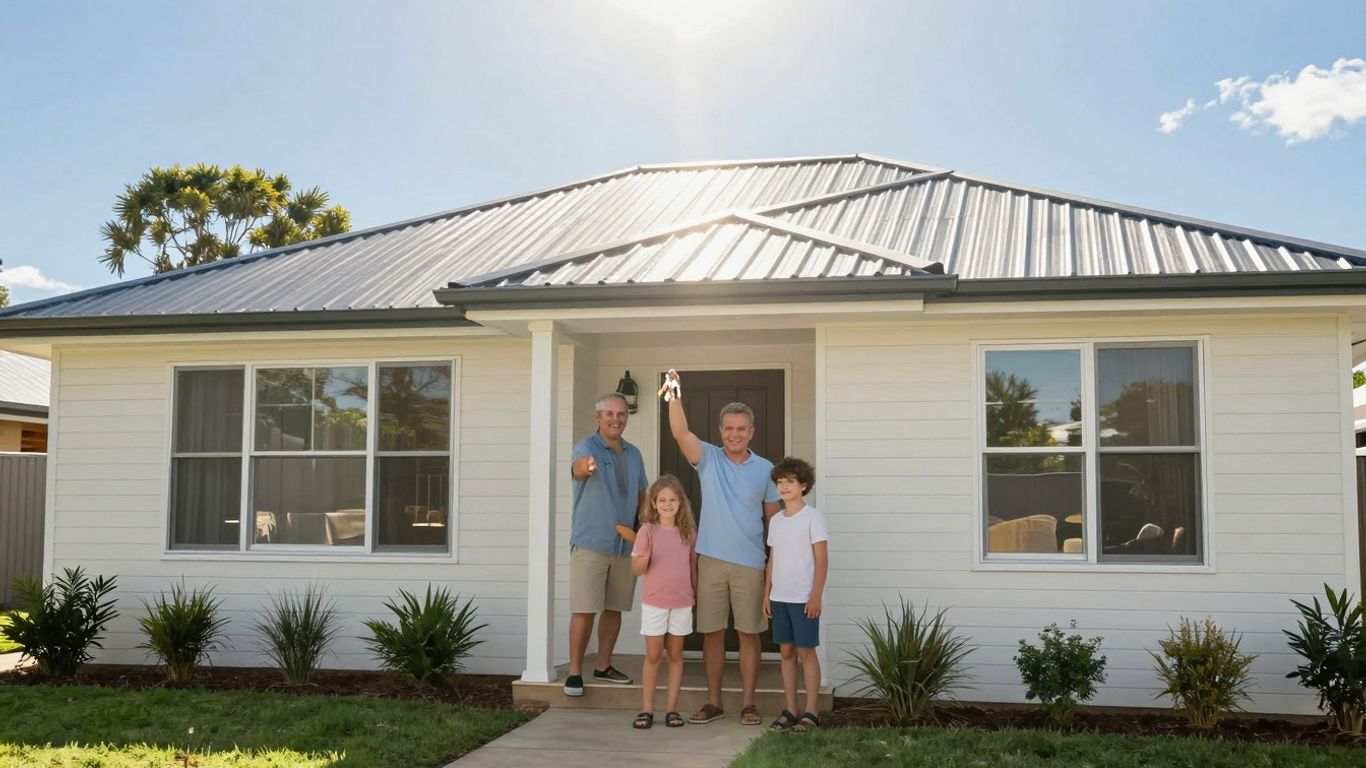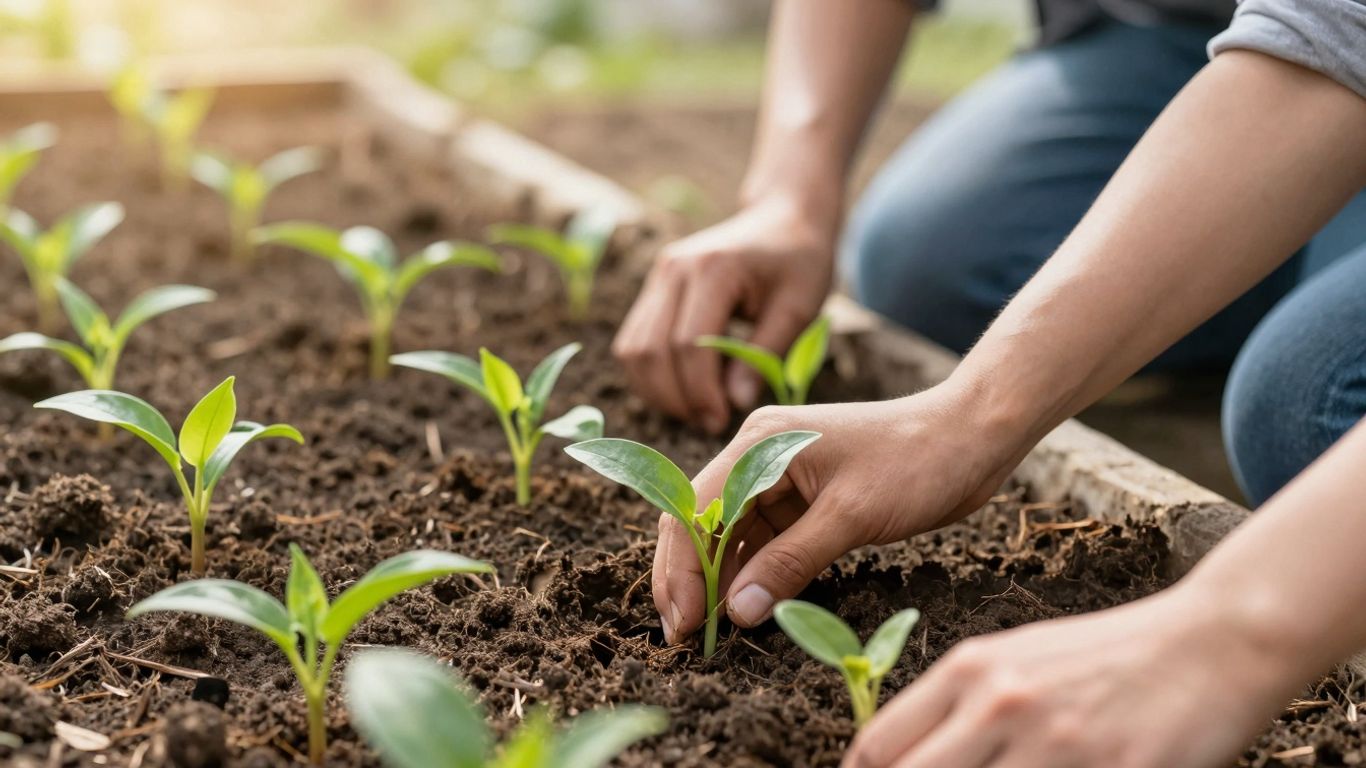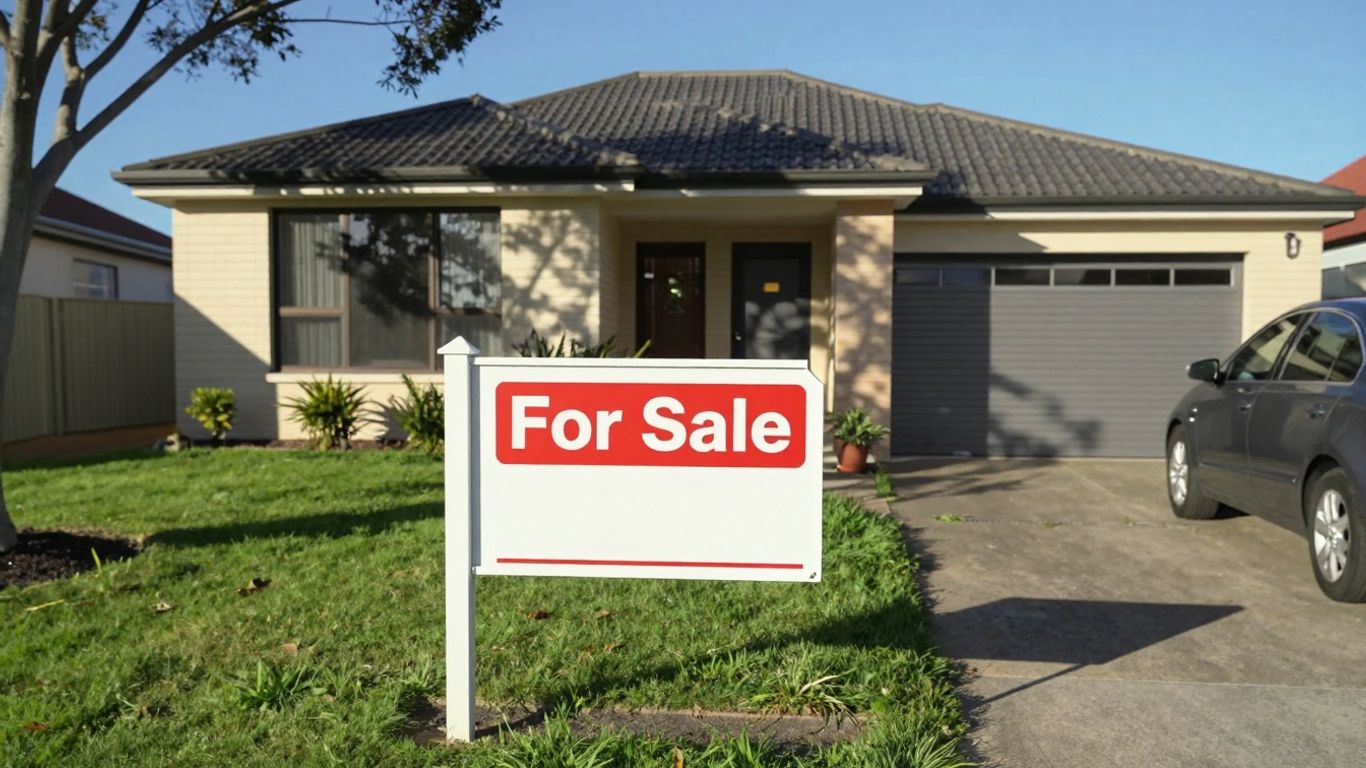In 2025, securing your first home in Australia can be a bit easier thanks to various government grants designed specifically for first home buyers. These grants can help reduce the financial strain of buying a property, making homeownership more accessible for many. This guide will break down what these grants are, who can apply, and how to navigate the application process. We’ll also look at specific programmes available in New South Wales, Victoria, and Queensland, so you can make informed decisions as you embark on your home-buying journey.
Key Takeaways
-
First home buyer grants 2025 are designed to assist new homeowners with financial support.
-
Eligibility typically requires being a first-time buyer and meeting income and residency criteria.
-
Each state has its own specific grant programmes, with varying amounts and conditions.
-
The application process involves several steps, including gathering necessary documents and avoiding common mistakes.
-
Staying updated on potential changes to grants in 2025 is important for future buyers.
Understanding First Home Buyer Grants 2025
Buying your first home is a massive deal, a real step towards getting your financial life sorted. But let’s be honest, it can feel like climbing a mountain, right? The property market is wild, and the costs can be, well, terrifying. That’s where first home buyer grants come into play. They’re basically government programmes designed to take some of the financial sting out of buying your first place. In 2025, these grants are more important than ever, helping make the dream of owning a home a reality for many Aussies.
What Are First Home Buyer Grants?
First home buyer grants are basically financial assistance specifically for people buying their first home. Think of them as a leg-up to help you get into the property market. These grants can differ depending on where you are and what the housing market is doing. They might be a one-off payment or even tax breaks. The main aim is to make buying a home more achievable by cutting down on those initial costs, making it easier to get your foot in the door.
How Do Grants Work?
Okay, so how do these grants actually work? Well, it’s pretty straightforward. The government, either at the federal or state level, offers money to eligible first home buyers. This money can be used to reduce the amount you need for a deposit, cover stamp duty, or just generally ease the financial strain of buying a property. The specifics vary from state to state, so it’s important to check what’s available where you’re looking to buy. For example, you might be able to combine a Help to Buy scheme with a first home owner grant to really boost your buying power.
Benefits of First Home Buyer Grants
First home buyer grants have a few big advantages.
-
They make it easier to save for a deposit.
-
They reduce the amount you need to borrow, which means lower mortgage repayments.
-
They can help you get into the property market sooner.
Grants are super important for making housing more affordable. They give much-needed help to people who are keen to own their own home. These grants encourage people to take the plunge into homeownership, which helps keep the housing market balanced. Plus, they give the economy a boost by supporting new home construction and related industries. Basically, they’re a win-win for everyone involved.
Eligibility Requirements for Grants
General Eligibility Criteria
Okay, so you’re keen to get your hands on a first home buyer grant? Awesome! But before you start dreaming of paint colours and furniture, let’s talk about who actually qualifies. Generally, these grants are for people buying their first home – makes sense, right? This usually means you (or your partner) haven’t owned property in Australia before.
Here’s a quick rundown of what they usually look for:
-
You’ve never owned a property before (or at least, not in a long time – some states have exceptions).
-
You plan to live in the property as your primary residence. This isn’t for investment properties, unfortunately.
-
You’re over 18. Seems obvious, but worth mentioning!
It’s super important to check the specific rules for your state, because they can vary quite a bit. Don’t just assume you’re eligible – do your homework!
Residency and Citizenship Requirements
To get a first home buyer grant, you’ll almost always need to be an Australian citizen or a permanent resident. This is a pretty standard requirement across all the states and territories. You’ll need to provide proof of your residency status when you apply, so make sure you have your documents ready. Temporary residents usually aren’t eligible, but again, check the fine print for your specific state, just in case there are any exceptions.
Property Type and Value Limits
Not just any property will do! Most grants have restrictions on the type of property you can buy and how much it can cost. For example, some grants are only for new homes, while others might cover existing properties too. There’s often a cap on the purchase price – so if you’re eyeing off a mansion, you might be out of luck. These value limits are there to make sure the grants are helping people get into affordable housing. Check the specific property types allowed.
Here’s a general idea:
-
New Homes: Often targeted by grants, supporting construction and new development.
-
Existing Homes: Some grants cover these, but might have stricter conditions.
-
Land and Build Packages: Can be eligible, but the total cost needs to stay under the limit.
|
State |
Value Limit (Example) |
Property Type (Example) |
|---|---|---|
|
New South Wales |
$600,000 |
New Homes |
|
Victoria |
$750,000 |
Existing Homes |
|
Queensland |
$700,000 |
Land and Build Packages |
Remember, these are just examples – the actual limits and conditions will depend on the state and the specific grant you’re applying for. So, do your research!
State-Specific Grant Programmes
New South Wales Grant Overview
Okay, so NSW. The New South Wales grant, or FHOG as it’s often called, is usually geared towards new homes. This is to try and get more new builds happening, which helps with the housing supply. The amount you can get varies, and there are caps on the property value, so you can’t just buy any mansion and expect the government to chip in. You’ll need to check the Revenue NSW website for the exact figures and eligibility stuff because it changes.
-
Focus on new home purchases.
-
Property value caps apply.
-
Aims to stimulate housing supply.
Victoria’s First Home Buyer Assistance
Victoria’s got a few different things going on. They have the First Home Owner Grant, like everyone else, but they also have stamp duty concessions. Stamp duty is that annoying tax you pay when you buy a property, and getting a discount on that can save you a fair bit of cash. The Victorian Government also offers other assistance programmes, so it’s worth checking out all the options. Eligibility criteria are pretty strict, so make sure you meet them before you get your hopes up.
-
First Home Owner Grant available.
-
Stamp duty concessions for eligible purchases.
-
Other assistance programmes may be available.
Queensland Grant Details
Queensland tends to offer pretty decent grants for building or buying new homes. The idea is to encourage people to move into new properties and boost the construction industry. The exact amount changes, but it’s usually a good chunk of money. Just like the other states, there are rules about who can get it and what kind of property qualifies. Make sure you read the fine print on the Queensland Government website. You might be able to apply for multiple government grants at the same time.
It’s really important to remember that these grants are subject to change. Governments tweak them all the time based on the economy and the housing market. So, always get the latest information from the official government websites before you make any big decisions.
-
Grants for building or buying new homes.
-
Aims to boost the construction industry.
-
Specific eligibility criteria apply.
Application Process for First Home Buyer Grants

Steps to Apply for Grants
Okay, so you’re keen to get your hands on a First Home Buyer Grant? Good on ya! The process can seem a bit daunting, but breaking it down makes it manageable. First, research which grants you’re actually eligible for – don’t waste time on ones you can’t get. Each state has its own rules, so hit up their government website.
Then:
-
Gather all your documents. Seriously, get everything ready before you start the application. This includes ID, bank statements, proof of income, and the contract of sale.
-
Complete the application form. Be honest and accurate. Any mistakes can cause delays or even rejection.
-
Submit your application. Do this as early as possible. Some grants have limited funding, so it’s first in, best dressed.
It’s a good idea to talk to a mortgage broker. They know the ins and outs of the grant system and can help you navigate the process. Plus, they can help you find the best loan for your situation.
Required Documentation
Right, let’s talk paperwork. You’ll need a bunch of stuff to prove you’re a legit first home buyer and that you meet all the criteria. Think of it like building a case to show you deserve the grant. Here’s a rundown of what you’ll probably need:
-
Proof of Identity: Passport, driver’s licence, birth certificate – the usual suspects.
-
Proof of Income: Payslips, tax returns, Centrelink statements (if applicable).
-
Bank Statements: Showing your savings and any other assets.
-
Contract of Sale: The document that proves you’re buying the property.
-
First Home Buyer Declaration: A form stating you’re a first-time buyer and meet the eligibility requirements.
Make sure everything is certified if required. Don’t just send in photocopies of everything. Check the specific requirements for each grant, as they can vary slightly.
Common Application Mistakes to Avoid
Alright, let’s keep you from shooting yourself in the foot. Heaps of people make the same mistakes when applying for these grants, so learn from their pain! Here are some common pitfalls to dodge:
-
Incomplete Applications: Missing documents or unanswered questions are a big no-no. Double-check everything before you submit.
-
Providing Incorrect Information: Honesty is the best policy. Don’t try to fudge the numbers or hide anything. It will come back to bite you.
-
Missing Deadlines: Some grants have strict deadlines, so don’t leave it to the last minute. Get your application in early to avoid disappointment.
-
Not Meeting Eligibility Criteria: Make sure you actually qualify for the grant before you apply. Check the fine print and don’t assume anything.
-
Ignoring State-Specific Requirements: Each state has its own rules, so don’t assume what works in NSW will work in Victoria. Do your research!
Avoid these blunders, and you’ll be well on your way to getting that sweet, sweet grant money.
Comparing Grant Amounts and Benefits
Typical Grant Amounts by State
Okay, so you’re trying to figure out how much dosh you can actually get, right? Well, it varies wildly depending on which state you’re looking at. Each state has its own idea of what’s a good amount, and it’s all tied to their local housing market and what they’re trying to achieve.
Here’s a rough idea, but keep in mind these numbers can change, so always double-check the official websites:
-
New South Wales (NSW): Often focuses on new builds, with grants that can be around $10,000. They’re really pushing for more new homes to be built.
-
Victoria (VIC): Might offer more flexibility, including options for existing properties. Grant amounts can vary, but expect something in the ballpark of $10,000 – $20,000.
-
Queensland (QLD): Known for pretty decent grants, especially if you’re building or buying new. You could be looking at $15,000 or more.
It’s not just about the cash, though. Think about what kind of property you want and where you want to live. A smaller grant in one state might be better than a larger one in another if it suits your needs better.
Additional Financial Assistance Options
Grants are great, but they’re not the only game in town. There’s a bunch of other stuff you might be able to get your hands on. For example:
-
Stamp Duty Concessions: A lot of states offer discounts or even waivers on stamp duty for first home buyers. This can save you a serious chunk of change.
-
First Home Loan Deposit Scheme: The government supports Australians in purchasing homes by funding up to 30% for existing homes and 40% for new homes as part of the 2025 federal budget. This helps you get into a home with a smaller deposit.
-
Regional Incentives: If you’re willing to move out of the city, you might find extra grants or assistance specifically for regional areas. They’re trying to get more people living outside the major cities.
Impact of Grants on Home Buying Costs
The big question: how much difference do these grants actually make? Well, it can be pretty significant. A $10,000 or $15,000 grant can make a real dent in your deposit, which means you might be able to get into a home sooner than you thought. Plus, it reduces the amount you need to borrow, which means lower mortgage repayments down the track.
Here’s a quick look at how it might play out:
|
Cost |
Without Grant |
With $10,000 Grant |
With $15,000 Grant |
|---|---|---|---|
|
Deposit |
$50,000 |
$40,000 |
$35,000 |
|
Loan Amount |
$450,000 |
$440,000 |
$435,000 |
|
Monthly Repayments (approx) |
$2,500 |
$2,444 |
$2,416 |
Of course, these are just rough numbers, and your actual situation will depend on your income, the property you buy, and the interest rate you get. But it gives you an idea of the potential savings. Just make sure you do your homework and figure out what’s available in your state. Understanding the state-specific grants is essential for prospective buyers.
Future of First Home Buyer Grants
Potential Changes in 2025
Okay, so it’s late April 2025, and everyone’s wondering what’s going to happen with these first home buyer grants. Honestly, predicting the future is tough, but we can look at a few things. One thing I reckon we’ll see is adjustments to the income caps. With wages (hopefully) going up, they’ll probably tweak those limits so more people can still get a slice of the pie. Also, property value thresholds might get a nudge upwards, because, well, house prices never seem to go down, do they?
Government Initiatives and Economic Factors
Right now, the government’s got a bit of a balancing act. They want to help first-timers, but they also don’t want to pump up the housing market too much. Interest rates are a big one to watch. If they stay high, the government might feel the pressure to offer bigger grants or come up with new schemes to keep things moving. The overall state of the economy is going to play a massive role in what happens with these grants. If things are looking shaky, expect some changes aimed at boosting the housing sector.
It’s worth keeping an eye on what the Reserve Bank is doing and any major policy announcements. These things can give you a heads-up on potential changes to grant programmes.
Advice for Future Buyers
If you’re planning to buy your first home, my advice is simple: do your homework. Don’t just assume the grants will be the same next year. Check the state government websites regularly for updates. Talk to a mortgage broker – they usually know the ins and outs of these things. And most importantly, don’t stretch yourself too thin. Buying a house is a huge commitment, and you don’t want to be stuck if the grants change or disappear altogether.
Here’s a quick checklist:
-
Stay informed about policy changes.
-
Get professional financial advice.
-
Factor in potential interest rate hikes.
-
Don’t over-borrow based on current grant amounts.
Wrapping It Up
So there you have it! First home buyer grants in 2025 are a real lifeline for many Australians looking to buy their first home. They can help ease the financial strain that comes with purchasing property. Remember, each state has its own rules and amounts, so it’s important to check what’s available where you live. Staying updated on any changes is key, as these grants can shift with the market. With a bit of planning and research, you can make the most of these opportunities. Don’t miss out on the chance to turn your homeownership dreams into reality!
Frequently Asked Questions
What are first home buyer grants?
First home buyer grants are financial help from the government to assist people buying their first home. They can reduce the costs you need to pay upfront when purchasing a property.
Who is eligible for these grants?
To be eligible, you usually need to be buying your first home and must not have owned a property before. You also need to be an Australian citizen or a permanent resident.
How much money can I get from these grants?
The amount you can receive varies by state, but it often ranges from $10,000 to $20,000. This money can help with your deposit or other buying costs.
What types of properties qualify for the grants?
Most grants are for new homes or homes that meet certain price limits. It’s important to check the specific rules in your state.
How do I apply for a first home buyer grant?
You can apply for a grant through your state’s government website. You’ll need to provide some documents, like proof of identity and details about the property.
Are there any common mistakes to avoid when applying?
Yes! Some common mistakes include not checking eligibility requirements, missing deadlines, or not providing the right documents. Make sure to read all instructions carefully.






